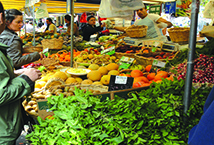- Home
- ESEC SCOPE
- Publications
- Food product supply chains
Food product supply chains
Visuel

Type of text :
Opinion and report
Type of referral :
Own initiative
Working group :
Section for Agriculture, Fisheries and Food
Date d'adoption
Date adopted : 05/11/2016
Rapporteur(s) :
Photo

Albert RITZENTHALER
CFDT Group
Overview
Présentation
Food product supply chains organise access to food from the producer through to the consumer. The ESEC's view of the way they work is clear: the mass consumption model is in crisis and the limits of a system beset by price wars, which upset the value chain to the disadvantage of everyone involved, are plain for all to see.
While the successive reforms of the CAP have replaced the price and quantity regulation mechanisms with contract-based procedures between stakeholders, the lack of proper organisation between producers and distribution channels alike mean that the strongest stakeholders are able to dominate an industry battling with increasingly globalised competition. The main supermarket brands monopolise more than 70% of food supplies in France, and are continuing to tighten their grip through their recent grouping into four central purchasing offices. 98% of their suppliers are microbusinesses and SMEs, but national and international corporate giants still dominate. Meanwhile, intermediaries, wholesalers and logistics professionals are taking on an ever more strategic role. On the producers side, the number of agricultural holdings (450,000 in mainland France) has fallen by 8% since 2010. Producer organisations, which are trying to increase the value of their outputs, and the inter-branch organisations, which organise the distribution channels, simply do not have enough capacity for action.